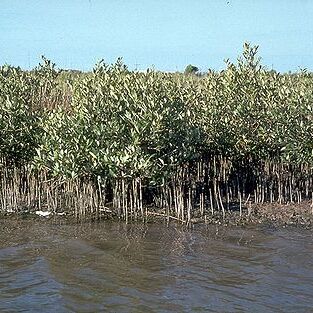Shrubs or trees of maritime swamps or saline lagoons; roots spreading, with vertical pneumatophores. Stem and branches terete, nodose, articulate. Leaves simple, opposite, decussate, entire, coriaceous, petiolate. Inflorescence in upper leaf axils, terminal or subterminal, pedunculate, usually umbellate or paniculate, mostly capitate (in Australia). Flowers sessile, bisexual, protandrous, scented, each subtended by 1 bract and 2 lateral bracteoles. Calyx of 5 free sepals. Corolla gamopetalous, 4-lobed, actinomorphic or variably zygomorphic. Stamens 4, inserted in throat of corolla tube. Ovary 1-celled with free central placentation; ovules 4, pendant, orthotropous, naked. Fruit a 2-valved capsule. Seeds without integument, solitary, without endosperm.
Fls in cymes, often corymbose; calyx 5-partite; corolla-tube short, broad, lobes 4-5. Stamens 4, inserted at corolla-throat. Ovary with 4-winged central placenta; ovules 4, pend. Capsule coriac., 2-valved, 1-loculed. Seed solitary, erect; embryo large; cots large, radicle villous. Germination is well-advanced before fall of fr. Genus widespread, of some 10 spp., the N.Z. one endemic.
Characters as for the family.
Characters of the family.

